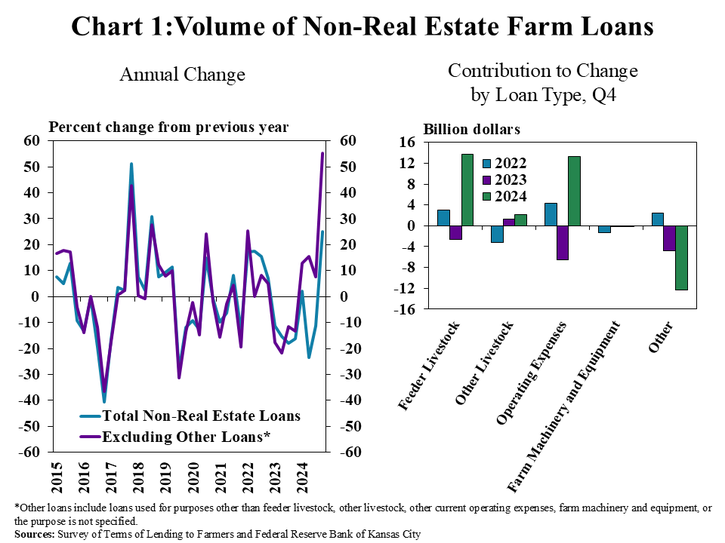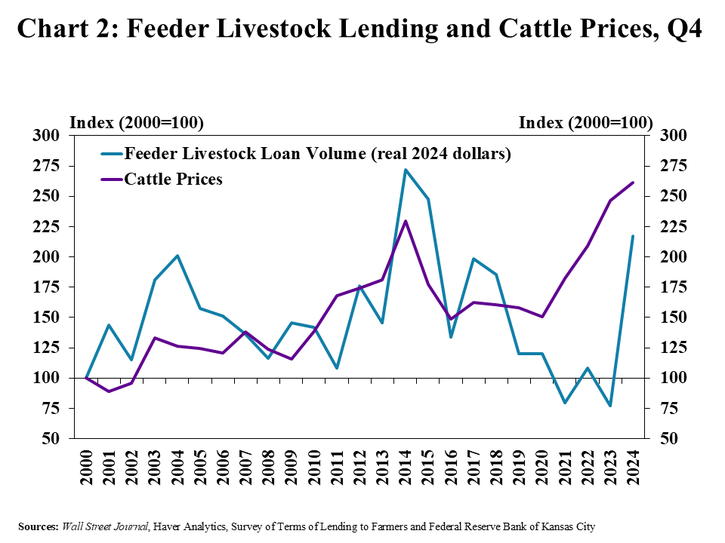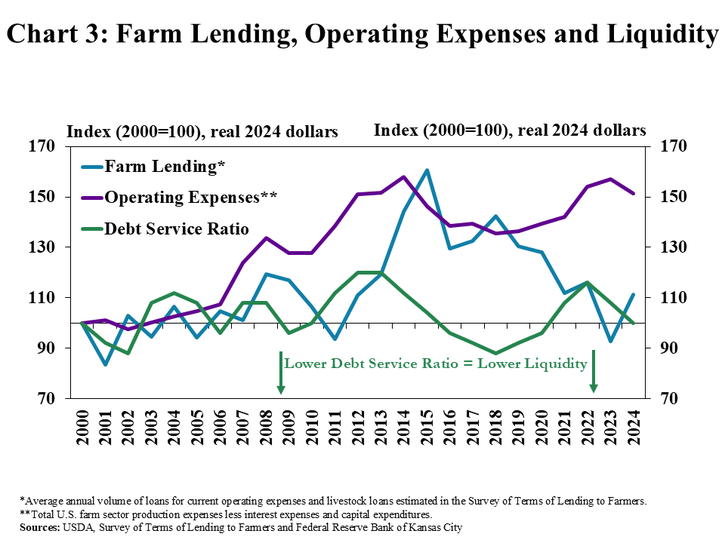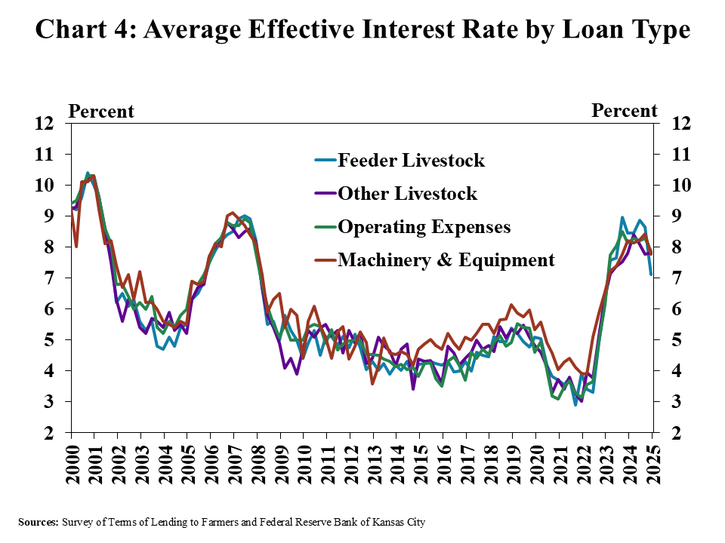Strong growth in farm lending activity at commercial banks continued into the fourth quarter of 2024. The volume of farm operating loans increased for the fourth consecutive quarter and feeder livestock lending also increased sharply. Demand for non-real estate agricultural loans rebounded over the past year as production expenses remained elevated and farm sector liquidity contracted alongside weak crop prices. Financing also increased despite farm loan interest rates staying above longer-term averages and could intensify financial stress for some farming operations.
Fourth Quarter National Survey of Terms of Lending to Farmers
Non-real estate farm lending grew sharply alongside increases in feeder livestock and operating loans. According to the Survey of Terms of Lending to Farmers, the volume of non-real estate farm loans at commercial banks was about 25% higher than the same time a year ago (Chart 1). Considerable growth in loans for feeder livestock and operating expenses contributed most to the increase while loans for miscellaneous purposes remained subdued.

Feeder livestock lending increased as cattle prices remained at historically high levels. The volume of loans used for purchasing feeder livestock has typically increased during periods of increasing cattle prices (Chart 2). Lending levels were subdued in recent years but picked up in 2024, reaching the highest level for the fourth quarter since 2015.

Farm lending has also increased alongside elevated farm sector production costs and deterioration in liquidity. Non-real estate lending activity has historically increased during periods of declining debt service coverage and high operating expenses (Chart 3). Annual average loan volumes dropped sharply through 2023, but ticked up in 2024 and upward pressures are likely to persist if liquidity continues tightening.

Interest rates on agricultural loans declined slightly, but remained at multi-decade highs. The mean rate charged on all types of non-real estate farm loans dropped on average, by about 50 basis points since the beginning of 2024 (Chart 4). Rates were still above the average over the past 25 years and could worsen the emerging financial stress for some borrowers.

Data and information
National Survey of Terms of Lending to Farmers Historical Data
National Survey of Terms of Lending to Farmers Data Tables
About National Survey of Terms of Lending to Farmers Data
The views expressed are those of the authors and do not necessarily reflect the positions of the Federal Reserve Bank of Kansas City or the Federal Reserve System.
